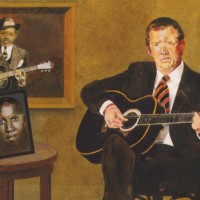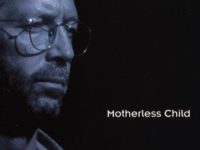It was just one of those nights: So much better than expected. In one evening, I got to see Rock God Eric Clapton and his blues father Muddy Waters.
That one of the cutest girls in the school (let’s call her “Doris” because, well … that was her name) went with me just added to the sum of surreal. That we rode to the concert with our French teacher – and ended up passing around the wineskin and other happy substances? OK, that was just plain weird. Hey, it was the 1970s, you know?
Clapton was touring on the Backless album but of course, Slowhand was the record. Everybody owned that album. Everybody tweaked the volume dial on the radio when “Lay Down Sally” came on.
Backless was, to use a description that I’ve always hated, a laid-back collection of songs. “Tulsa Time” rocked in a bluesy sort of way, but then there were tunes like “Promises.” Maybe, at that point in my young life, a song like that was a little too subtle to be appreciated. Yes sir, I was more attuned to the big flavors of life: the scary redheaded Doris, heavy metal, Lester Bangs. This would explain my reaction to Waters that night: He was the real thing. Uncut, rough, and far more passionate than Clapton seemed to be.
While my love of Muddy Waters never faded, I did open up to some of the finer things in the musical world: J.J. Cale and Eric Clapton’s The Road to Escondido arrived on Nov. 7, 2006 and, much like Backless, was the kind of record I would not have “gotten” in my teens. Too many subtle flavors, textures, and styles to wade through. This record found Cale and Clapton “reuniting for the first time” (the late Cale authored “After Midnight” and “Cocaine”) to produce the kind of album that the solo Eric Clapton never seems to manage.
The majority of tunes were written by J.J. Cale, as The Road to Escondido leveraged the guitars of Cale and Clapton and a large cast of guest musicians (guitars alone: Doyle Bramhall II, Derek Trucks, John Mayer, Albert Lee) to visit with many aspects of the blues. There was the sprightly bounce of “Missing Person,” the quick shuffle of “When This War Is Over,” (recalling Lynyrd Skynyrd’s “T For Texas”), the two-steppin’ “Dead End Road,” and the finger-picking “Three Little Girls.”
And what would an Eric Clapton-related album be without a little reggae twist on the blues? “Don’t Cry Sister” fills that slot. Oh, straight-ahead blues? Sure thing. “Sporting Life Blues” was a fine take on the Brownie McGhee song, while “It’s Easy” added the requisite bag of sleaze. For late-night-at-the-bar, there was “Last Will and Testament,” and a very sultry “Hard to Thrill” (shhh … co-written with John Mayer). This stuff made me want to plug in my guitar and make a little noise.
The Road to Escondido sounded like two old friends getting together to celebrate their shared musical roots. It was full of the history of the blues, as well as the history of these two men.
I guess when you’re 17, it’s impossible to have any perspective on this sort of thing. Still, to this day it makes me feel good that my young self recognized the blues singularity that was Muddy Waters. Later on, my roots grew and the proper connections were made.
Hmmm … I wonder what ever became of Doris?
- Why the Rolling Stones’ Harrowing ‘Gimme Shelter’ is Still Revealing New Depths - November 18, 2024
- How Talking Heads’ ‘Fear of Music’ Opened Up a World of Art and Sound - August 5, 2024
- How Deep Cuts Propelled Bruce Springsteen’s ‘Born in the U.S.A.’ - June 4, 2024




what a blast from the past! I had the extreme pleasure of meetin g and jammin with jj at an after show party at Southamptn College,NY in the early 70s..the man is amazing!